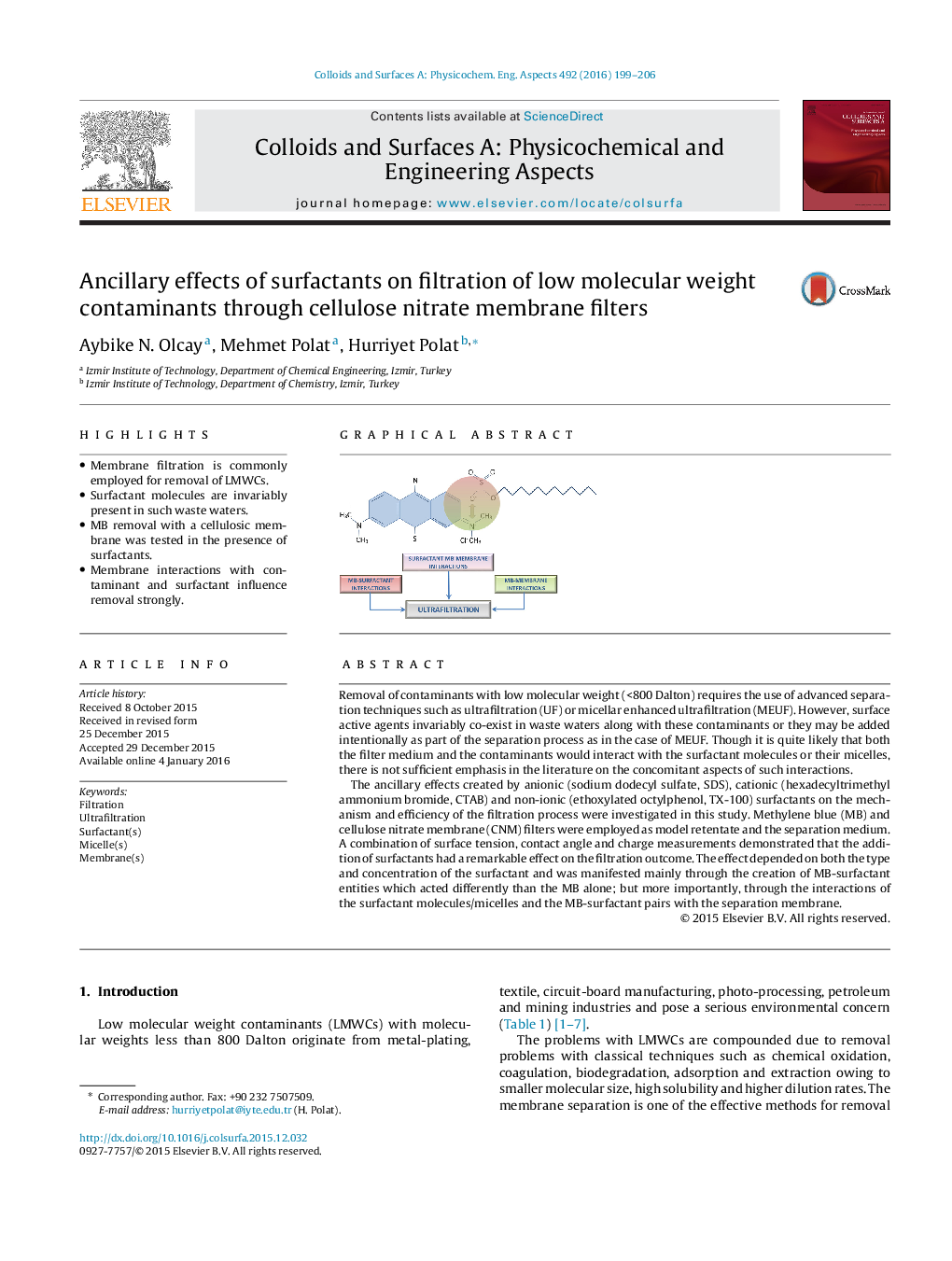| کد مقاله | کد نشریه | سال انتشار | مقاله انگلیسی | نسخه تمام متن |
|---|---|---|---|---|
| 591781 | 1453881 | 2016 | 8 صفحه PDF | دانلود رایگان |
• Membrane filtration is commonly employed for removal of LMWCs.
• Surfactant molecules are invariably present in such waste waters.
• MB removal with a cellulosic membrane was tested in the presence of surfactants.
• Membrane interactions with contaminant and surfactant influence removal strongly.
Removal of contaminants with low molecular weight (<800 Dalton) requires the use of advanced separation techniques such as ultrafiltration (UF) or micellar enhanced ultrafiltration (MEUF). However, surface active agents invariably co-exist in waste waters along with these contaminants or they may be added intentionally as part of the separation process as in the case of MEUF. Though it is quite likely that both the filter medium and the contaminants would interact with the surfactant molecules or their micelles, there is not sufficient emphasis in the literature on the concomitant aspects of such interactions.The ancillary effects created by anionic (sodium dodecyl sulfate, SDS), cationic (hexadecyltrimethyl ammonium bromide, CTAB) and non-ionic (ethoxylated octylphenol, TX-100) surfactants on the mechanism and efficiency of the filtration process were investigated in this study. Methylene blue (MB) and cellulose nitrate membrane (CNM) filters were employed as model retentate and the separation medium. A combination of surface tension, contact angle and charge measurements demonstrated that the addition of surfactants had a remarkable effect on the filtration outcome. The effect depended on both the type and concentration of the surfactant and was manifested mainly through the creation of MB-surfactant entities which acted differently than the MB alone; but more importantly, through the interactions of the surfactant molecules/micelles and the MB-surfactant pairs with the separation membrane.
Figure optionsDownload as PowerPoint slide
Journal: Colloids and Surfaces A: Physicochemical and Engineering Aspects - Volume 492, 5 March 2016, Pages 199–206
